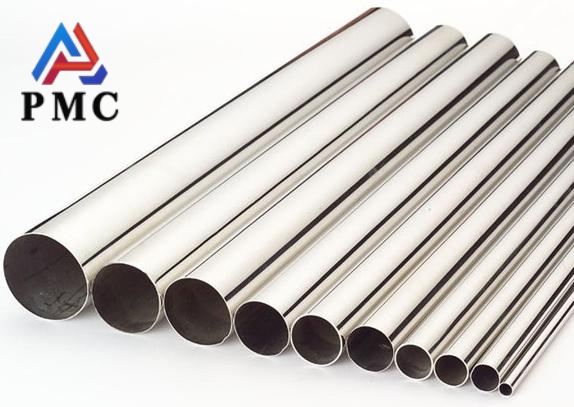
Precautions For Packaging and Transportation of 304 Stainless Steel Pipes
Stainless steel pipes require different packaging forms according to their product type, finish, size and transportation method. Because 304 stainless steel pipes are usually product pipes, mechanical pipes and decorative pipes, and steel pipe processing can be forming, annealing, pickling, cold working, grinding, polishing and decorative treatment, so it leads to a wide variety of sizes and processing types. Therefore, when purchasing and ordering, you should pay special attention to the corresponding packaging, labeling and shipping methods. Next, Permanent Steel Manufacturing Co.,Ltd will show you the precautions for packaging and transportation of 304 stainless steel pipes.
Precautions for packaging 304 stainless steel pipes
Stainless steel pipes are often packaged and transported in bags, boxes or protective containers. Pipes with an outer diameter greater than 152.4 mm can be transported in loose pieces, packaged, or without packaging. The length, outer diameter, wall thickness, finish and transportation method determine the packaging method. Most polished tubes are packaged in wooden boxes or boxes of other suitable materials.
It is necessary to bundle 304 stainless steel pipes because if the quantity is too large during transportation, there may be risks of bending, extrusion deformation or twisting of the steel pipes during transportation. In addition, other auxiliary measures need to be taken when bundling. Bales are usually secured with flat steel ribbon, but other suitable materials can also be used. The number of knots required will depend on the length and weight of the bale. For some products with special finish requirements, special order quantities, special modes of transportation or other factors, special containers need to be prepared for shipment, such as paper tubes, cartons, wooden boxes or similar containers.

Transportation precautions for 304 stainless steel pipes
It is very important to choose the right means of transportation. For example, a van can effectively prevent the steel pipes from being affected by the external environment during transportation, especially in humid or dusty environments, and can prevent rust and contamination by impurities.
When hoisting, be sure to use special hoists, such as hoisting belts, and never use wire ropes, otherwise it is easy to scratch the surface of the steel pipe, destroy its protective layer, and reduce its corrosion resistance. Lifting and placing actions should be gentle to prevent impact and collision.
During transportation, the transportation vehicle should be kept clean and well isolated and protected, such as placing a soft protective mat on the bottom of the carriage to prevent dust, oil, rust, etc. from contaminating the stainless steel pipes. At the same time, to avoid collision between steel pipes, they can be placed at intervals or separated by buffer materials.
If it is transported by sea, due to the strong corrosiveness of seawater, in addition to the conventional packaging protection, it is also necessary to wrap moisture-proof and corrosion-proof materials, such as plastic film, around the packaging. In winter transportation, it is necessary to prevent frost and ice on the surface of stainless steel pipes to avoid damage to the performance of steel pipes due to temperature changes. If necessary, the transportation vehicle can be insulated.
304 stainless steel pipe receiving and storage suggestions
When receiving the goods, strict inspection is required. Before unloading, general inspection is carried out to check whether the packaging is damaged. When unloading, it is confirmed again whether the pipes have been accidentally damaged during transportation.
Next, check the outer surface of each pipe to see if there are any scratches, dents or other damage, and check the quantity against the delivery note. Once a steel pipe with signs of damage is found, it should be stored separately, and it should not be handled without authorization. Communicate with the supplier in a timely manner to negotiate a solution.
When storing, choose a clean, dry, well-ventilated warehouse and avoid a humid environment, as moisture will cause stainless steel pipes to rust. At the same time, keep away from corrosive substances such as acids, alkalis, and salts to prevent chemical corrosion. Pipes of different materials and specifications should be stored separately, especially 304 stainless steel pipes and carbon steel pipes should be separated, because the potential difference between the two is different, and it is easy to form a galvanic cell in a humid environment after contact, which accelerates corrosion. If conditions permit, stainless steel pipes can be stored on a cushion to avoid direct contact with the ground.
Read more: Why does the 304 Stainless Steel Pipe Turn Yellow?


